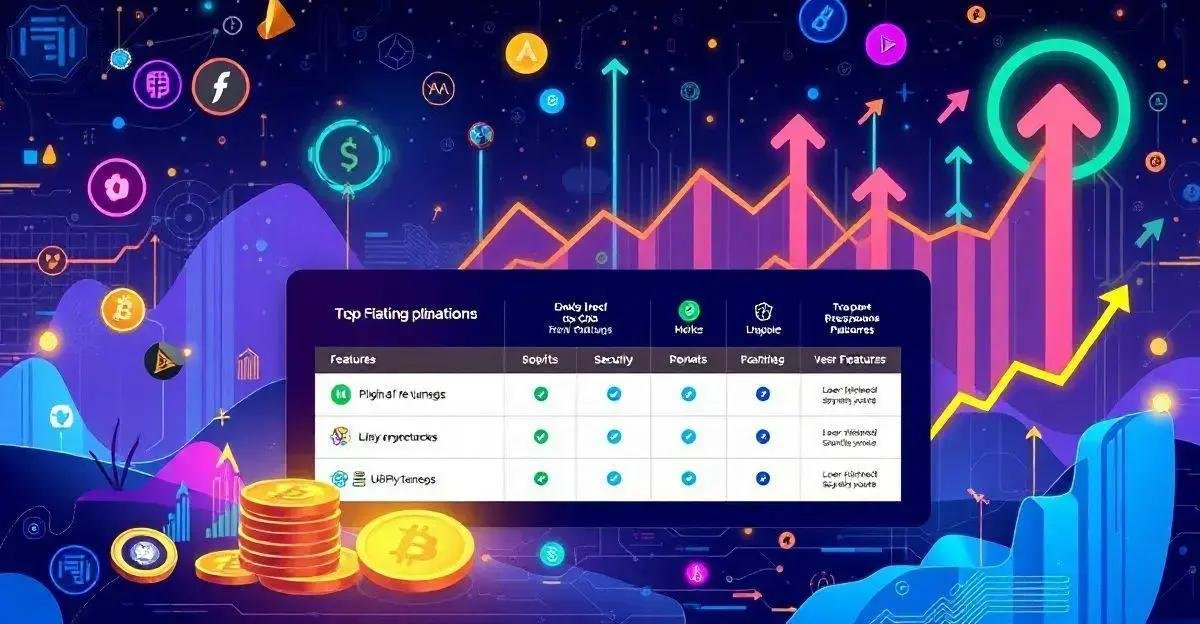DeFi staking platforms are at the forefront of the cryptocurrency revolution, allowing users to earn rewards on their assets without intermediaries.
By leveraging decentralized finance, investors can engage in staking more effectively and securely.
This article will dive deep into the workings, benefits, and necessary precautions of DeFi staking platforms, helping you navigate this exciting investment landscape.
What are DeFi Staking Platforms?
DeFi staking platforms are decentralized systems that allow users to lock up their cryptocurrencies for a set period to earn rewards. This process helps secure the network and validate transactions.
Participants generally receive a percentage of the transaction fees or newly minted tokens in return. The liquidity provided by stakers is fundamental for the growth of DeFi ecosystems.
Unlike traditional staking methods, DeFi platforms operate without intermediaries, making it a more transparent and accessible option for investors.
Users can choose from a variety of assets to stake, depending on their risk appetite and desired returns.
Benefits of Using DeFi Staking

There are several benefits of using DeFi staking platforms that attract investors.
Firstly, these platforms offer high returns compared to traditional savings accounts. Investors can earn substantial interest on their cryptocurrency holdings that would otherwise remain idle.
Secondly, DeFi staking is highly accessible; anyone with internet access can participate, making it a great option for both seasoned investors and newcomers.
Thirdly, the decentralized nature of these platforms reduces the reliance on intermediaries, leading to lower fees and faster transactions.
Additionally, users have greater control over their funds, as they can withdraw or reinvest at any time without facing penalties.
Finally, DeFi staking contributes to the network’s overall health by helping secure and validate transactions, which enhances the entire ecosystem.
How to Choose the Right DeFi Staking Platform
Choosing the right DeFi staking platform is crucial for maximizing your investment and minimizing risks. Start by researching the platform’s reputation; look for user reviews and community opinions to gauge its reliability.
Next, consider the fees involved—some platforms charge transaction fees, while others may have withdrawal fees.
Evaluate the return rates offered by different platforms; higher rates may come with increased risks.
Ensure the platform supports the cryptocurrency you want to stake, as not all platforms have the same assets available.
Additionally, check for security features like smart contract audits and insurance for staked assets.
Lastly, consider the user experience; a good interface and customer support can enhance your staking journey.
Top DeFi Staking Platforms Reviewed

When reviewing the top DeFi staking platforms, consider key features such as user interface, reward rates, and security measures.
Popular platforms like Aave, Compound, and Yearn Finance are known for their extensive offerings and user-friendly experiences.
Aave allows users to stake various assets while benefiting from high liquidity.
Compound is favored for its straightforward process of earning interest on staked tokens.
Yearn Finance optimizes yield by automatically shifting funds between various DeFi platforms for the best returns.
Always check user reviews and ensure that the platform has a strong community support system.
Each platform has unique benefits and risks, so careful analysis is essential.
Risks Associated with DeFi Staking
Engaging in DeFi staking comes with specific risks that investors should be aware of.
Firstly, there is always the risk of smart contract vulnerabilities. Bugs or exploits within the code can lead to loss of funds. It is crucial to use platforms with audit reports from reputable firms.
Secondly, market volatility poses a significant risk; the value of staked assets can drop dramatically, impacting returns.
Additionally, many DeFi projects face regulatory uncertainties, which can affect their operation.
Users also face risks associated with liquidity pools; certain projects may not have sufficient liquidity, making it hard to withdraw staked assets promptly.
Lastly, some platforms utilize inflationary tokens, where reward rates may decrease over time, potentially leading to lower long-term gains.
Future Trends in DeFi Staking

Future trends in DeFi staking indicate a shift toward greater interoperability between different platforms.
As DeFi matures, we may see more cross-chain solutions that allow users to stake across multiple blockchains.
Additionally, with increasing institutional interest, platforms are likely to enhance security features to attract larger investors.
Yield optimization tools are becoming popular, enabling users to maximize returns by automatically moving staked assets to the most profitable pools.
Another trend is the rise of governance tokens that give users voting power in the platforms they stake on, fostering community involvement.
Lastly, liquidity mining may evolve into more complex strategies, enhancing user engagement and encouraging further investment in DeFi staking.
Frequently Asked Questions about DeFi Staking Platforms
What are DeFi staking platforms?
DeFi staking platforms allow users to lock their cryptocurrencies to earn rewards while supporting network security.
What are the benefits of using DeFi staking?
Benefits include high returns, accessibility, lower fees, greater control over funds, and contributing to network health.
How do I choose the right DeFi staking platform?
Look for the platform’s reputation, fees, return rates, supported cryptocurrencies, security features, and user experience.
What are some top DeFi staking platforms?
Popular platforms include Aave, Compound, and Yearn Finance, known for their user-friendly interfaces and strong returns.
What risks are associated with DeFi staking?
Risks include smart contract vulnerabilities, market volatility, regulatory uncertainties, insufficient liquidity, and inflationary rewards.
What are the future trends in DeFi staking?
Expect more interoperability, institutional interest, yield optimization tools, governance tokens, and evolving liquidity mining strategies.



